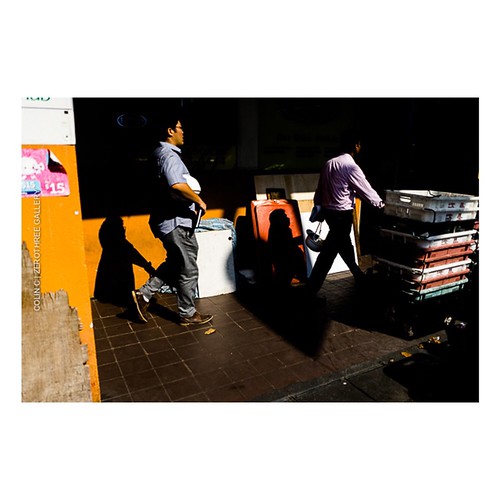Etected by ML-281 Western blot using the SV5 specific antibody. Finally the toxicity of the treatment was evaluated by histological analysis of different organs. In the second set of experiments the activity of locally synthesized scFv-Fc was evaluated injecting intra-articularly liposomes bearing the DNA prior to the intra-articular injection of mBSA. The time of injection and the concentration of liposomes were selected on the basis of the results obtained in the first set of experiments.employing the same primers used for its subcloning as reported by Boscolo et al. [20]. Amplification was detected separating DNA in agarose gel.SDS-PAGE and Western blotLavages of knee joints were subjected to SDS-PAGE on 10 gel under reducing conditions according to Laemmli followed by electrophoretic transfer onto nitrocellulose membrane (Hybond ECL; GE Healthcare, Milan, Italy) using the semidry Semiphor transfer unit (Heifer Scientific Instruments, San Francisco, CA). After soaking in 50 mM Tris-HCl pH 7.6 containing 0.5 M NaCl and 4 skimmed milk for 1 h at 37uC to block the free binding sites, the nitrocellulose sheet was incubated with 1/5000 alkaline phosphatase conjugated goat anti-rat IgG. The enzymatic reaction was developed using nitroblue tetrazolium (0.60 mg/ml) and 5bromo-4-chloro-3-indolyl phosphate (0.30 mg/ml), both purchased from Sigma-Aldrich and diluted in 0.1 mM Tris-HCl pH 9.5 containing 0.1 M NaCl and 5 mM MgCl2. Rainbow RPN 756 (GE Healthcare) was used as a mixture of defined molecular markers.Analysis of plasmid vector in synovial tissueThe efficacy of transfection was evaluated analyzing the presence of DNA encoding MB12/22 in the synovium obtained from different rats. Total DNA was extracted from lysed synovial tissue and used to amplify DNA that encodes the anti-C5 scFv-FcImmunofluorescence analysisTissue deposition of C3 was assessed by incubating frozen tissue sections with goat IgG anti-rat C3 (Cappel, ICN Biomedicals, Milan, Italy) at a 1:200 dilution for 60 minutes at roomFigure 2. Effect of the intraarticular injection of DNA in the production of MB12/22. DMRI-C (30 mg)+MB12/22 DNA (6 mg) or DMRI-C alone were injected in the right knee of 3 animals per group. Miniantibody encoding DNA was detected in synovial tissues by PCR for 14 days (A). Miniantibody production was confirmed at day 3 post-injection in the washes of the right (but not of the left) knees by western blot (B). doi:10.1371/journal.pone.0058696.gAnti-C5 DNA Therapy for Arthritis Preventiontemperature followed by FITC abeled rabbit anti-goat IgG at a 1:200 dilution (DAKO, Glostrup, Denmark) for additional 60 minutes at room temperature. A similar approach was used to examine synovial tissue for the presence of C9, using rabbit IgG anti-rat C9 (a kind gift from Prof. P. Morgan, Cardiff, UK) at a 1:1000 dilution, followed by FITC labeled swine anti-rabbit IgG (DAKO, Glostrup, Denmark) at a 1:40 dilution. The fluorescence intensity was analyzed in 10 different tissue areas (0,07 mm2 each) of each tisample using ImageJ software.bind human C5 as ZK 36374 custom synthesis revealed  by ELISA while failing to react with human C3 or BSA. As expected, pUCOE revealed a higher level of protein production and was used for the synthesis of MB12/22 for all subsequent experiments. The recombinant antibody maintained the ability to inhibit the C5 activity in a standard hemolytic assay of complement activation through the classical pathway and proved to be equally effective in blocking the activity of bo.Etected by western blot using the SV5 specific antibody. Finally the toxicity of the treatment was evaluated by histological analysis of different organs. In the second set of experiments the activity of locally synthesized scFv-Fc was evaluated injecting intra-articularly liposomes bearing the DNA prior to the intra-articular injection of mBSA. The time of injection and the concentration of liposomes were selected on the basis of the results obtained in the first set of experiments.employing the same primers used for its subcloning as reported by Boscolo et al. [20]. Amplification was detected separating DNA in agarose gel.SDS-PAGE and Western blotLavages of knee joints were subjected to SDS-PAGE on 10 gel under reducing conditions according to Laemmli followed by electrophoretic transfer onto nitrocellulose membrane (Hybond ECL; GE Healthcare, Milan, Italy) using the semidry Semiphor transfer unit (Heifer Scientific Instruments, San Francisco, CA). After soaking in 50 mM Tris-HCl pH 7.6 containing 0.5 M NaCl and 4 skimmed milk for 1 h at 37uC to block the free binding sites, the nitrocellulose sheet was incubated with 1/5000 alkaline phosphatase conjugated goat anti-rat IgG. The enzymatic reaction was developed using nitroblue tetrazolium (0.60 mg/ml) and 5bromo-4-chloro-3-indolyl phosphate (0.30 mg/ml), both purchased from Sigma-Aldrich and diluted in 0.1 mM Tris-HCl pH 9.5 containing 0.1 M NaCl and 5 mM MgCl2. Rainbow RPN 756 (GE Healthcare) was used as a mixture of defined molecular markers.Analysis of plasmid vector in synovial tissueThe efficacy of transfection was evaluated analyzing the presence of DNA encoding MB12/22 in the synovium obtained from different rats. Total DNA was extracted from lysed synovial tissue and used to amplify DNA that encodes the anti-C5 scFv-FcImmunofluorescence analysisTissue deposition of C3 was assessed by incubating frozen tissue sections with goat IgG anti-rat C3 (Cappel, ICN Biomedicals, Milan, Italy) at a 1:200 dilution for 60 minutes at roomFigure 2. Effect of the intraarticular injection of DNA in the production of MB12/22. DMRI-C (30 mg)+MB12/22 DNA (6 mg) or DMRI-C alone
by ELISA while failing to react with human C3 or BSA. As expected, pUCOE revealed a higher level of protein production and was used for the synthesis of MB12/22 for all subsequent experiments. The recombinant antibody maintained the ability to inhibit the C5 activity in a standard hemolytic assay of complement activation through the classical pathway and proved to be equally effective in blocking the activity of bo.Etected by western blot using the SV5 specific antibody. Finally the toxicity of the treatment was evaluated by histological analysis of different organs. In the second set of experiments the activity of locally synthesized scFv-Fc was evaluated injecting intra-articularly liposomes bearing the DNA prior to the intra-articular injection of mBSA. The time of injection and the concentration of liposomes were selected on the basis of the results obtained in the first set of experiments.employing the same primers used for its subcloning as reported by Boscolo et al. [20]. Amplification was detected separating DNA in agarose gel.SDS-PAGE and Western blotLavages of knee joints were subjected to SDS-PAGE on 10 gel under reducing conditions according to Laemmli followed by electrophoretic transfer onto nitrocellulose membrane (Hybond ECL; GE Healthcare, Milan, Italy) using the semidry Semiphor transfer unit (Heifer Scientific Instruments, San Francisco, CA). After soaking in 50 mM Tris-HCl pH 7.6 containing 0.5 M NaCl and 4 skimmed milk for 1 h at 37uC to block the free binding sites, the nitrocellulose sheet was incubated with 1/5000 alkaline phosphatase conjugated goat anti-rat IgG. The enzymatic reaction was developed using nitroblue tetrazolium (0.60 mg/ml) and 5bromo-4-chloro-3-indolyl phosphate (0.30 mg/ml), both purchased from Sigma-Aldrich and diluted in 0.1 mM Tris-HCl pH 9.5 containing 0.1 M NaCl and 5 mM MgCl2. Rainbow RPN 756 (GE Healthcare) was used as a mixture of defined molecular markers.Analysis of plasmid vector in synovial tissueThe efficacy of transfection was evaluated analyzing the presence of DNA encoding MB12/22 in the synovium obtained from different rats. Total DNA was extracted from lysed synovial tissue and used to amplify DNA that encodes the anti-C5 scFv-FcImmunofluorescence analysisTissue deposition of C3 was assessed by incubating frozen tissue sections with goat IgG anti-rat C3 (Cappel, ICN Biomedicals, Milan, Italy) at a 1:200 dilution for 60 minutes at roomFigure 2. Effect of the intraarticular injection of DNA in the production of MB12/22. DMRI-C (30 mg)+MB12/22 DNA (6 mg) or DMRI-C alone  were injected in the right knee of 3 animals per group. Miniantibody encoding DNA was detected in synovial tissues by PCR for 14 days (A). Miniantibody production was confirmed at day 3 post-injection in the washes of the right (but not of the left) knees by western blot (B). doi:10.1371/journal.pone.0058696.gAnti-C5 DNA Therapy for Arthritis Preventiontemperature followed by FITC abeled rabbit anti-goat IgG at a 1:200 dilution (DAKO, Glostrup, Denmark) for additional 60 minutes at room temperature. A similar approach was used to examine synovial tissue for the presence of C9, using rabbit IgG anti-rat C9 (a kind gift from Prof. P. Morgan, Cardiff, UK) at a 1:1000 dilution, followed by FITC labeled swine anti-rabbit IgG (DAKO, Glostrup, Denmark) at a 1:40 dilution. The fluorescence intensity was analyzed in 10 different tissue areas (0,07 mm2 each) of each tisample using ImageJ software.bind human C5 as revealed by ELISA while failing to react with human C3 or BSA. As expected, pUCOE revealed a higher level of protein production and was used for the synthesis of MB12/22 for all subsequent experiments. The recombinant antibody maintained the ability to inhibit the C5 activity in a standard hemolytic assay of complement activation through the classical pathway and proved to be equally effective in blocking the activity of bo.
were injected in the right knee of 3 animals per group. Miniantibody encoding DNA was detected in synovial tissues by PCR for 14 days (A). Miniantibody production was confirmed at day 3 post-injection in the washes of the right (but not of the left) knees by western blot (B). doi:10.1371/journal.pone.0058696.gAnti-C5 DNA Therapy for Arthritis Preventiontemperature followed by FITC abeled rabbit anti-goat IgG at a 1:200 dilution (DAKO, Glostrup, Denmark) for additional 60 minutes at room temperature. A similar approach was used to examine synovial tissue for the presence of C9, using rabbit IgG anti-rat C9 (a kind gift from Prof. P. Morgan, Cardiff, UK) at a 1:1000 dilution, followed by FITC labeled swine anti-rabbit IgG (DAKO, Glostrup, Denmark) at a 1:40 dilution. The fluorescence intensity was analyzed in 10 different tissue areas (0,07 mm2 each) of each tisample using ImageJ software.bind human C5 as revealed by ELISA while failing to react with human C3 or BSA. As expected, pUCOE revealed a higher level of protein production and was used for the synthesis of MB12/22 for all subsequent experiments. The recombinant antibody maintained the ability to inhibit the C5 activity in a standard hemolytic assay of complement activation through the classical pathway and proved to be equally effective in blocking the activity of bo.
